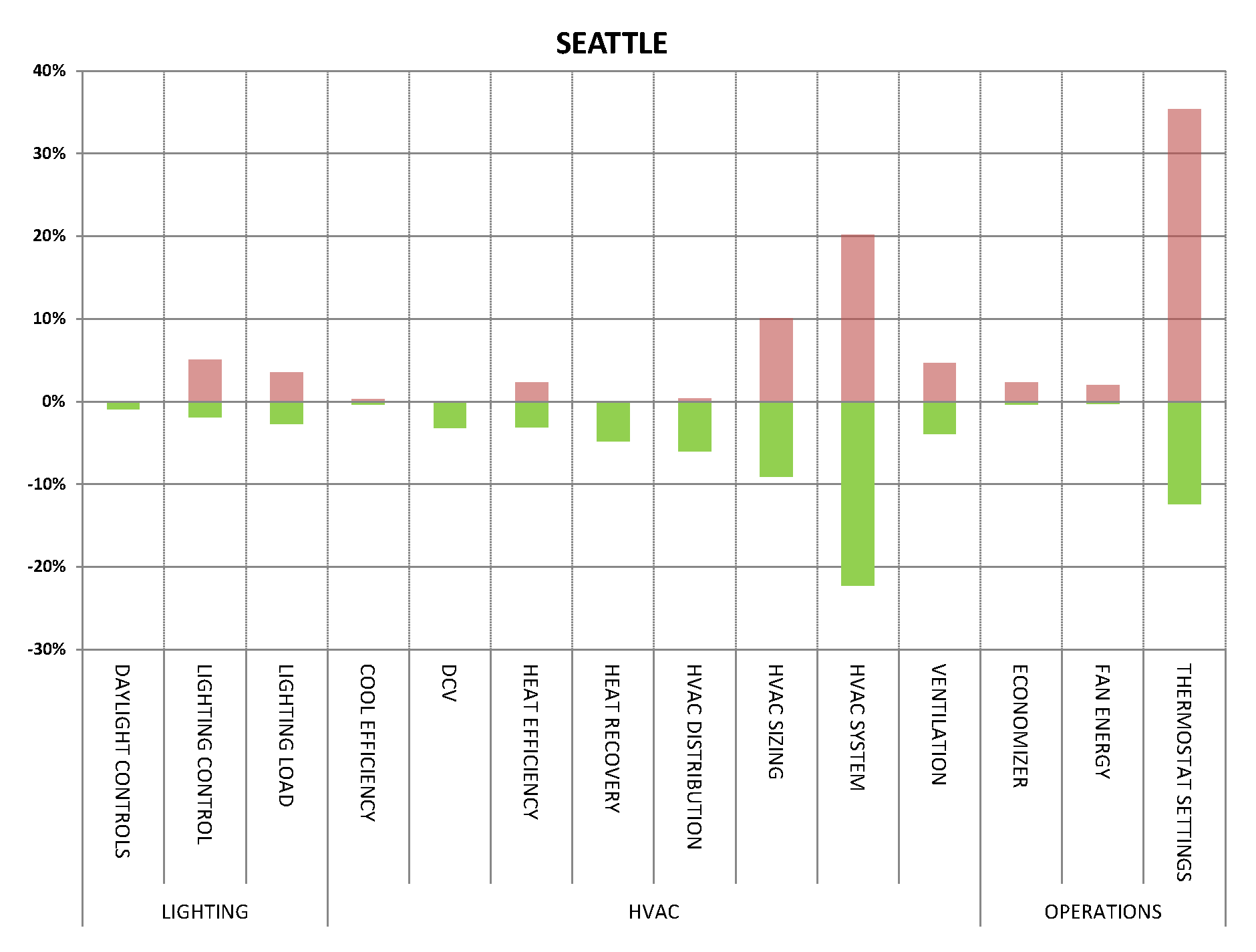Sensitivity Analysis
Quantifying the energy impact of design, operations, and occupant behavior in commercial buildings
This study evaluated how design decisions, operational strategies, and occupant behavior each influence total building energy use, challenging the conventional assumption that efficiency is locked in at the time of construction. Using a prototype “medium” office building developed by NREL and modeled in eQUEST, Ecotope tested 28 variables—ranging from HVAC and lighting systems to user habits and climate conditions—across realistic input ranges based on field observations. The analysis reveals that post-design factors, particularly occupant and operational behaviors, can have energy impacts comparable to or greater than traditional design choices.
Ecotope led the development of the simulation methodology, variable selection, and analysis framework. The study defined baseline conditions and realistic variable ranges, then executed batch DOE2.2E simulations to capture the spread of energy outcomes. The results confirmed that building performance is highly dynamic and shaped by user engagement, facility operations, and contextual factors beyond initial design. These findings offer critical guidance to design teams, operators, and policymakers seeking deeper impact from energy strategies, and underscore the importance of integrating behavioral and operational considerations into both design communication and building performance policies.
Learn more about this project here:
- Sensitivity Analysis: Comparing the Impace of Design, Operation, and Tenant Behavior on Building Energy Performance. New Buildings Institute, July 2011.
CLIENT: New Buildings Institute
COMPLETED: 2011

